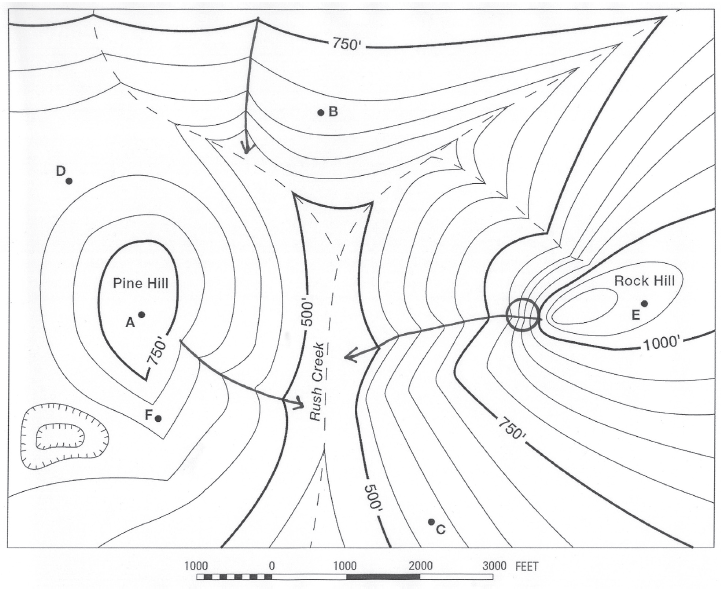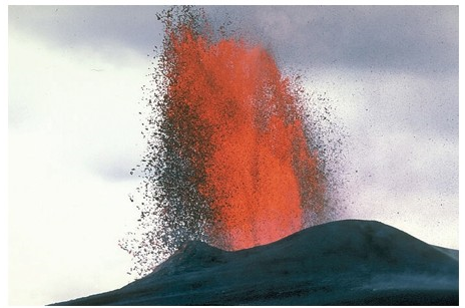Using a small rodent, such as a field mouse, and a predator, such as a snake, explain how coevolution works.
What will be an ideal response?
The rodent responds to the environmental pressure applied by the snake through changes in behavior, anatomy, or physiology to reduce the predation. The snake, facing reducing predatory success, changes in response to the rodent. The rodent again responds to the specifics of the environmental pressure. This step-by-step adaptation is known as coevolution.
You might also like to view...
What is the elevation of Point A?
The question is based on this contour line map with elevations shown in feet.
• North is to the top of the map.
• Streams are shown with dashed lines.
• A graphic scale for measuring horizontal distances is shown below the map.
• Estimate elevations between contour lines to the nearest half-contour interval; assume that the top of a
hill is one-half-contour interval higher than the highest contour line shown.

What will be an ideal response?
Which of the following is not a major controlling factor on volcanic eruption style?

A) Age of volcano
B) Chemistry of the magma
C) Magma volatile content
Complete the following nuclear equation: Po ? ? + He
A) Po B) Pb C) Pb D) Rn E) none of the above
Why is diorite considered a coarse-grained intermediate rock?
A) It contains a medium amount of silica. B) It contains a lot of silica. C) It contains very little silica. D) It is made up of the elements in the middle of the periodic table.